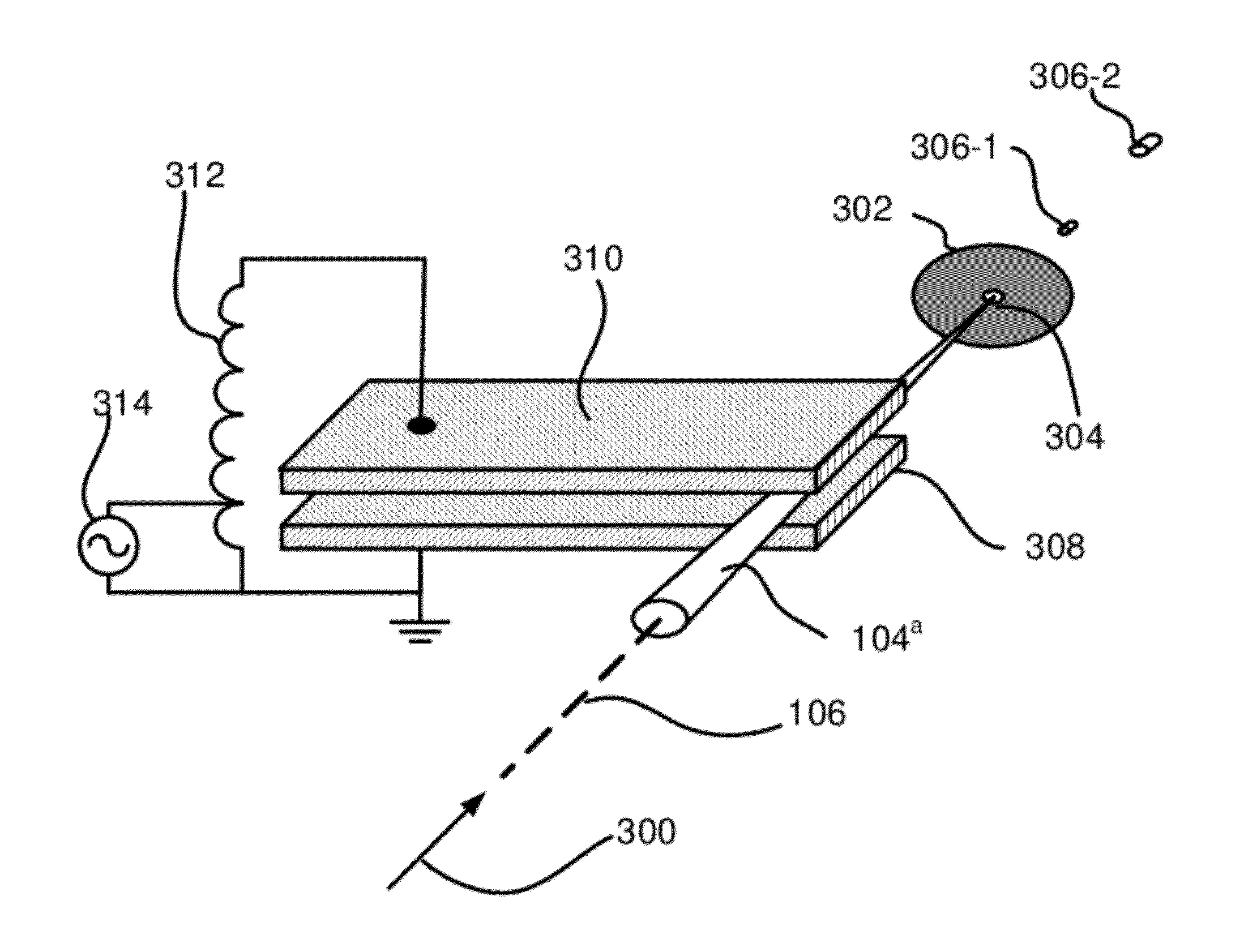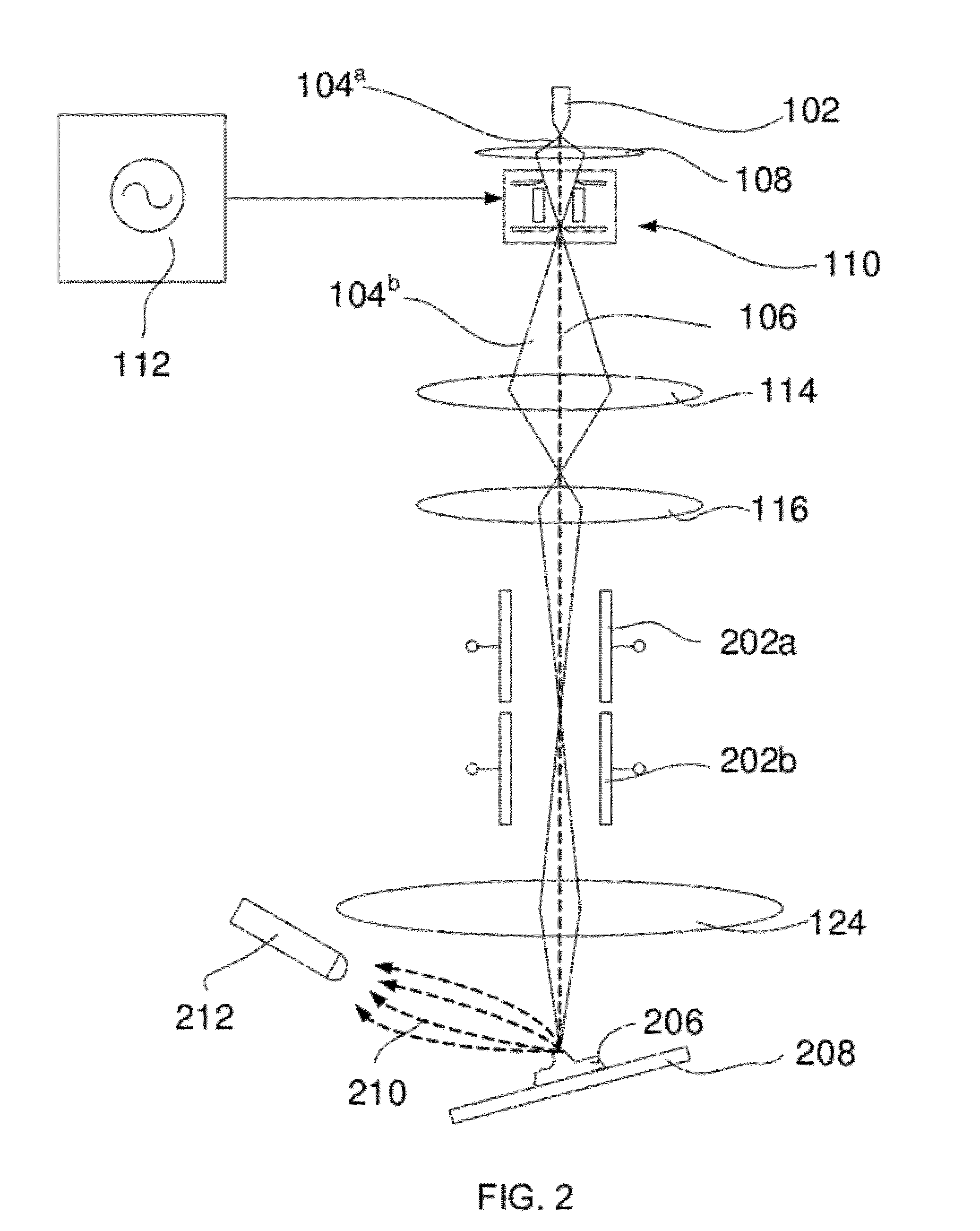Beam Blanker for Interrupting a Beam of Charged Particles
a beam blanker and charged particle technology, applied in the direction of beam deviation/focusing by electric/magnetic means, instruments, therapy, etc., can solve the problems of affecting the brightness of the beam, and affecting the alignment of the beam,
- Summary
- Abstract
- Description
- Claims
- Application Information
AI Technical Summary
Benefits of technology
Problems solved by technology
Method used
Image
Examples
Embodiment Construction
[0040]FIG. 1 schematically shows a TEM equipped with a beam blanker according to the invention.
[0041]A source of charged particles in the form of electron source 102 emits a beam of electrons 104a round electron-optical axis 106. An electron-optical lens 108, in the form of a magnetic or an electrostatic lens, focuses the beam in the beam blanker 110. A signal generator 112 is connected to the beam blanker to provide a driving signal to the beam blanker. The beam 104b leaving the beam blanker enters two condenser lenses 114 and 116, and the opening angle of the beam is limited by beam limiting aperture 118. Thereafter the beam illuminates the electron transparent sample 120. The sample is mounted on a sample holder 122 that may shift or tilt the sample. The so-called objective lens 124 forms a first magnified image of the sample, that is further magnified by lenses 126 and 128 to form an image on image plane 130. The image plane may coincide with a fluorescent screen, a CCD camera o...
PUM
 Login to View More
Login to View More Abstract
Description
Claims
Application Information
 Login to View More
Login to View More - R&D
- Intellectual Property
- Life Sciences
- Materials
- Tech Scout
- Unparalleled Data Quality
- Higher Quality Content
- 60% Fewer Hallucinations
Browse by: Latest US Patents, China's latest patents, Technical Efficacy Thesaurus, Application Domain, Technology Topic, Popular Technical Reports.
© 2025 PatSnap. All rights reserved.Legal|Privacy policy|Modern Slavery Act Transparency Statement|Sitemap|About US| Contact US: help@patsnap.com



